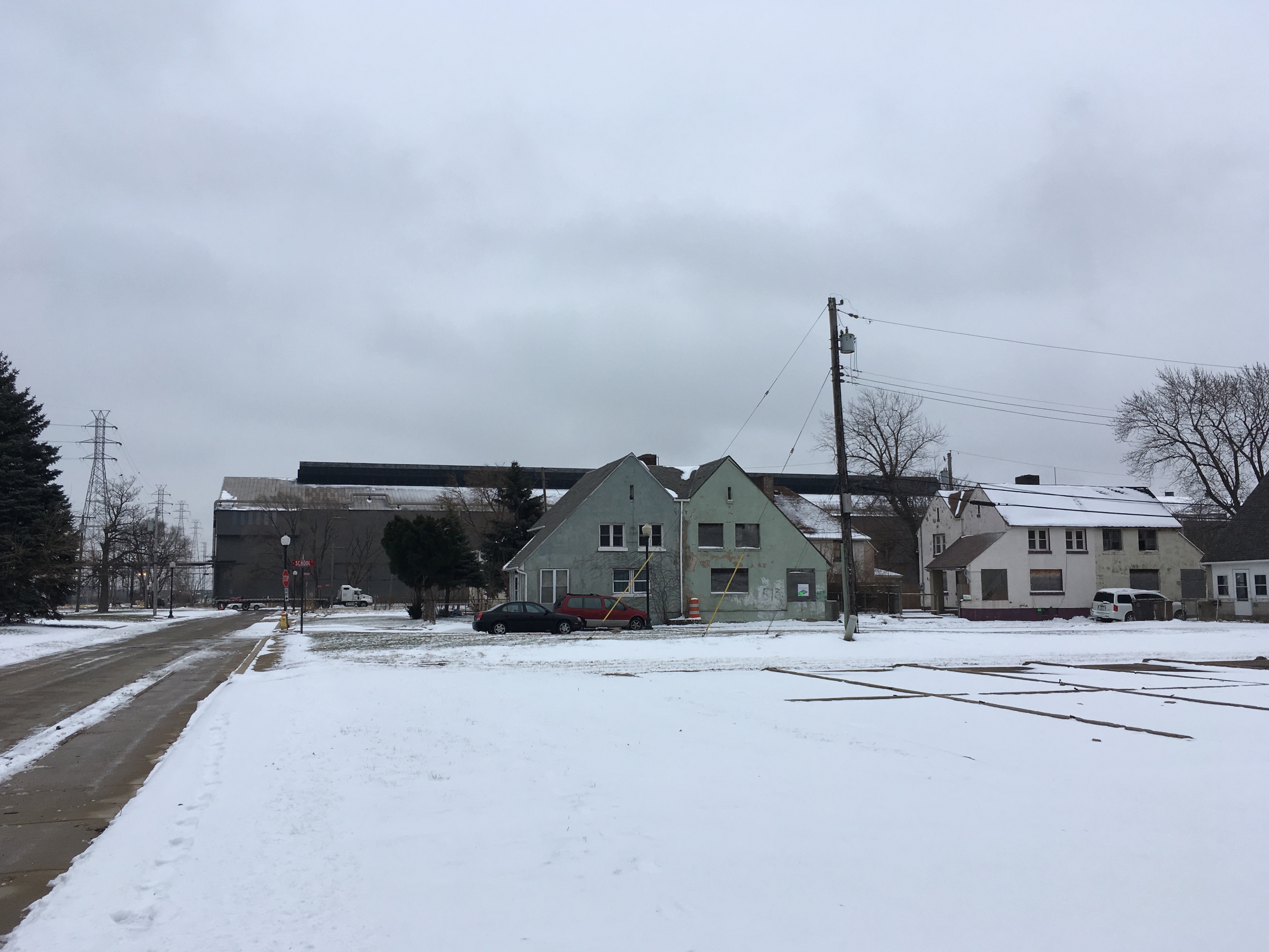Picture the lone remaining house on a city block, boxed in by office buildings, or a lonely holdout farm surrounded by suburban tract housing. Now, imagine a neighborhood-sized version of those places, a community disappearing year by year, slowly becoming more history than place. In this particular case it’s easy to see why it’s disappearing: it’s surrounded by the crucibles and cracking towers of the heaviest of America’s heavy industries. Penned in by relentless truck traffic, overcast by unnatural clouds, the nearest neighbor, indeed the nearest non-industrial structure, in any direction over a mile away. Oil giant BP purchases and demolishes homes as they come on the market. It’s the only motivated buyer.
Alternately, picture a neighborhood laid out by turn of the century architect Howard van Doren Shaw, noted designer of homes and offices for the gilded age gentry. A half-hour drive from downtown Chicago and a short walk from the sandy shores of Lake Michigan, the neighborhood’s intimate, about a quarter mile square, clustered around a village green and a 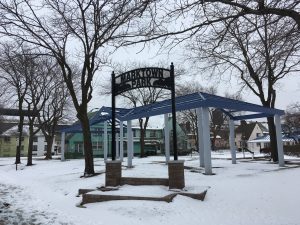 community center. With narrow streets, steep gabled roofs and muted stucco facades, it evokes the quiet, stolid atmosphere of an English country village. Residents commonly park on the sidewalks to conserve space. One could set sail on the local canal and float eventually down to the Gulf of
community center. With narrow streets, steep gabled roofs and muted stucco facades, it evokes the quiet, stolid atmosphere of an English country village. Residents commonly park on the sidewalks to conserve space. One could set sail on the local canal and float eventually down to the Gulf of
Mexico via the Mississippi River. Shaw designed the neighborhood
according the best principles of the Progressive Era.
Marktown, Indiana, is both places.
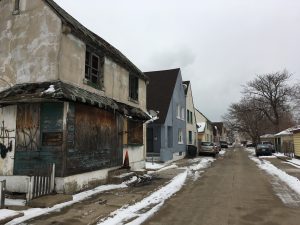
Built in 1917, Marktown was the first stage in a planned community intended to be nearly ten times larger. Shaw, hired by a local steel tubing manufacturer, brought to the ambitious project an imprimatur of wealth and distinction. He had grown up at the height of the robber baron era in Chicago’s Prairie Avenue district, then the Midwest’s most elite neighborhood–home to residents like George Pullman, Marshall Field, Phillip Armour and Joseph Sears. By the time he was commissioned to design Marktown, Shaw had left a mark of his own on his old neighborhood, designing an office building for a local textbook company and a massive printing plant there.
Today, Shaw’s progressive community hardly resembles the picturesque workers village he envisioned. It remains an enclave, to be sure, but a benighted enclave, an odd oasis of residential life separated from every neighbor, local business, amenity or public building by a desolate industrial moat. Pinned in by 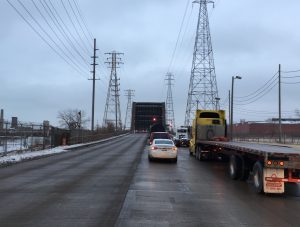 sludge-filled canals and mill and refinery traffic, inaccessible by foot except to the most intrepid pedestrian, it’s forty acres of prosaic midwestern life,
sludge-filled canals and mill and refinery traffic, inaccessible by foot except to the most intrepid pedestrian, it’s forty acres of prosaic midwestern life,
its boundaries defined by the quarter-mile sheds of US Steel’s tin works, the hulking shops of one of North America’s largest steel mills–ArcelorMittal’s Indiana Works–and the sprawling tubular jungle of
BP’s Whiting refinery, likewise one of the largest in North America.
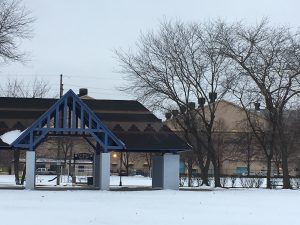 The sense of scale in Marktown is unsettling, unnatural for a residential neighborhood, the perspective and tempo unbalanced, dramatically skewed toward the needs of industry rather than those of humans. The ArcelorMittal Works alone covers an area five times
The sense of scale in Marktown is unsettling, unnatural for a residential neighborhood, the perspective and tempo unbalanced, dramatically skewed toward the needs of industry rather than those of humans. The ArcelorMittal Works alone covers an area five times
larger than LaGuardia Airport. There are 118 chemical storage tanks closer to Marktown than the nearest house.
To wander Marktown’s quiet streets, is to journey through a neighborhood wholly contained by a monumental industrial landscape built to provide the materials to support—literally—the lives and lifestyles of other people—people whose existence seems distant indeed when you are here. You are here connected more intimately to mechanism and process than to relationships with others . . . let alone to nature. You are in constant, unrelenting contact with the industrial forces that represent the brutal first steps in the conversion of nature’s resources into the products humans crave.
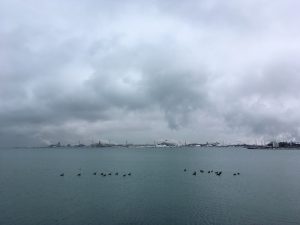
Back in Chicago on Prairie Avenue, the expansive stone mansions of Howard van Doren Shaw’s old neighborhood have largely disappeared, replaced by the townhouses, condos, hotels and high rises adjacent to North America’s largest convention center, moored nearby like an aircraft carrier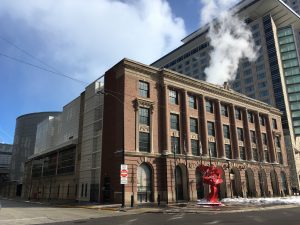 among dinghies. Shaw’s textbook company building was demolished in
among dinghies. Shaw’s textbook company building was demolished in
2003, its facade dismantled and reinstalled in front of the convention center’s cooling plant. Though some notable buildings have survived, what’s left has the garbled meaning of a mixed metaphor, a neighborhood out of place. Much like Marktown itself.
Ralph Walsh is a freelance writer based in Chicago. He shot all the photos for this post.




